From her atelier in Cairo, she dresses belly dancers from around the world
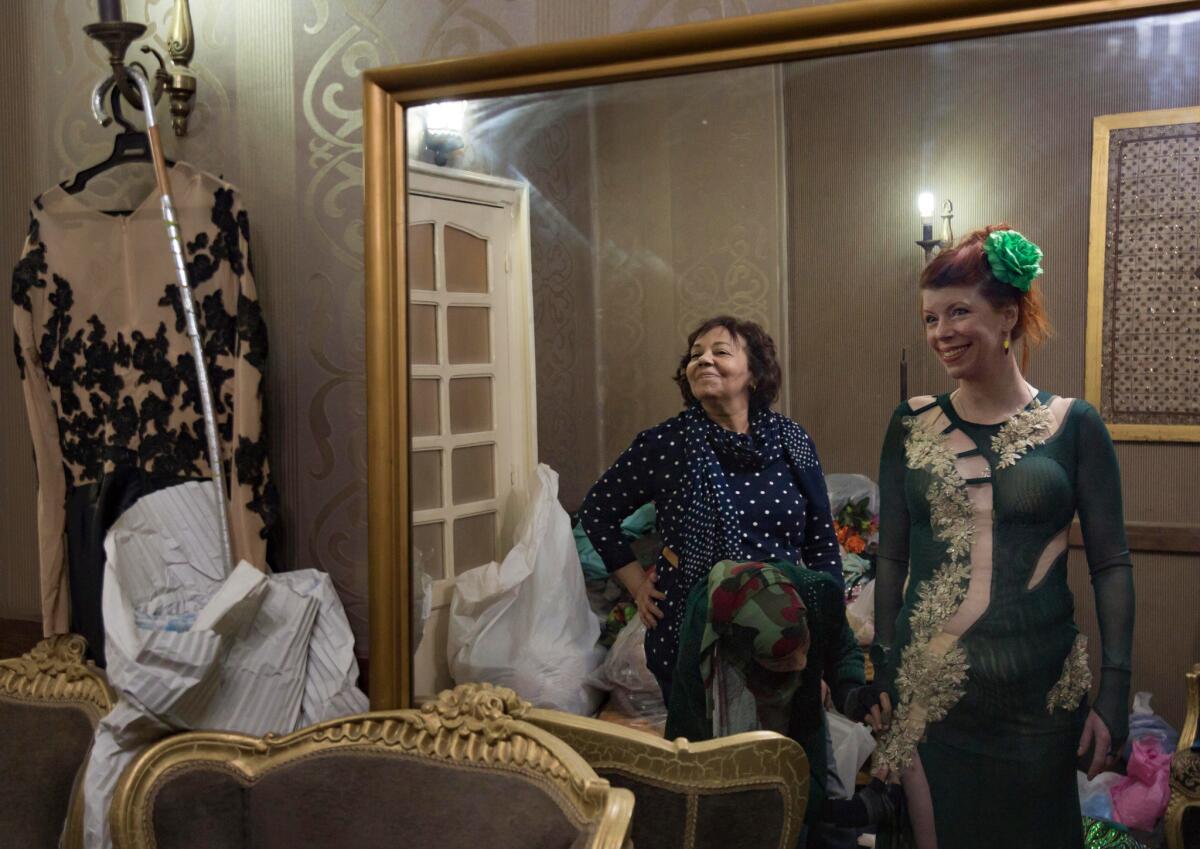
Eman Zaki is often called the Coco Chanel of belly dance.
If you need a tiger-print mesh ensemble with a diamante halter top encrusted with fake pearls, she can make it. Same goes for a gold and fuchsia-tinted stretch pleather mermaid gown with opalescent paillettes.
From her rambling second-floor workshop in a 1930s-era apartment building a few blocks from the Nile, she worked with one of Egyptâs biggest stars to help pioneer a figure-enhancing innovation known in the industry as âthe Dina bra.â
Raqs sharqi, or Oriental dance, as the centuries-old art form is called in the Arab world, is enjoying a rebirth here in its home country. Zaki, whose clientele has included Egyptian legends like Lucy and Fifi Abdou, now designs costumes for a new generation that has come to dominate the top rungs of the industry: foreigners whoâve made the pilgrimage to Cairo, the Broadway of belly dance.
âShe knows itâs important that the costume works with your personality and style, not just your body shape,â said Lorna Gow, who arrived here in 2006 and danced professionally for a decade before returning to her native Scotland.
Gow, who visits Cairo several times a year to lead belly dancing retreats and give private lessons, has owned more than 50 Eman Zakis, including a bedlah â the classic midriff-baring two-piece â of green-and-yellow Scottish wool tartan and a 1960s pop-art-themed number patterned after Andy Warholâs iconic Marilyn Monroe triptych.
Though much of her business comes through the internet, Zaki, who is 60, prefers to conceive costumes with clients in person at her atelier, located on a leafy, well-heeled block above a Suzuki motorcycle showroom. After climbing a dusty marble staircase, visitors are ushered into a parlor dimly lit by a beaux arts chandelier where workers tramp in and out carrying glasses of steaming tea.
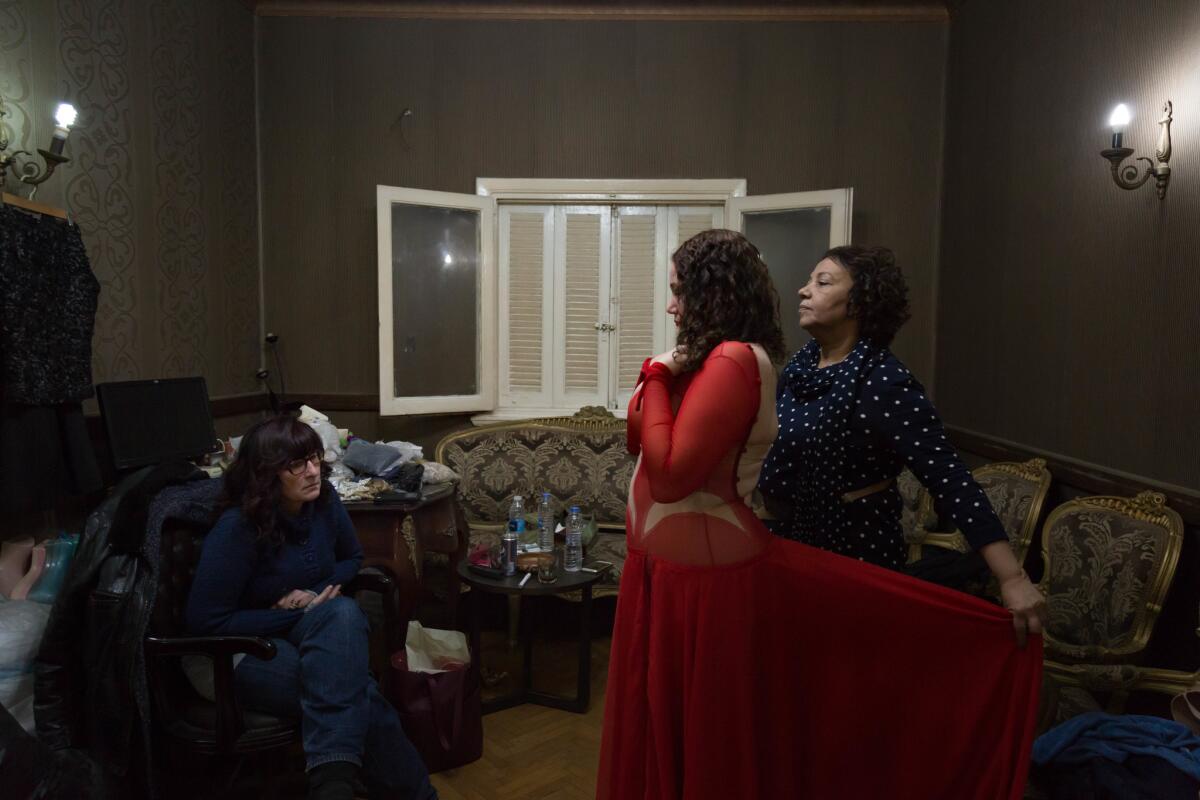
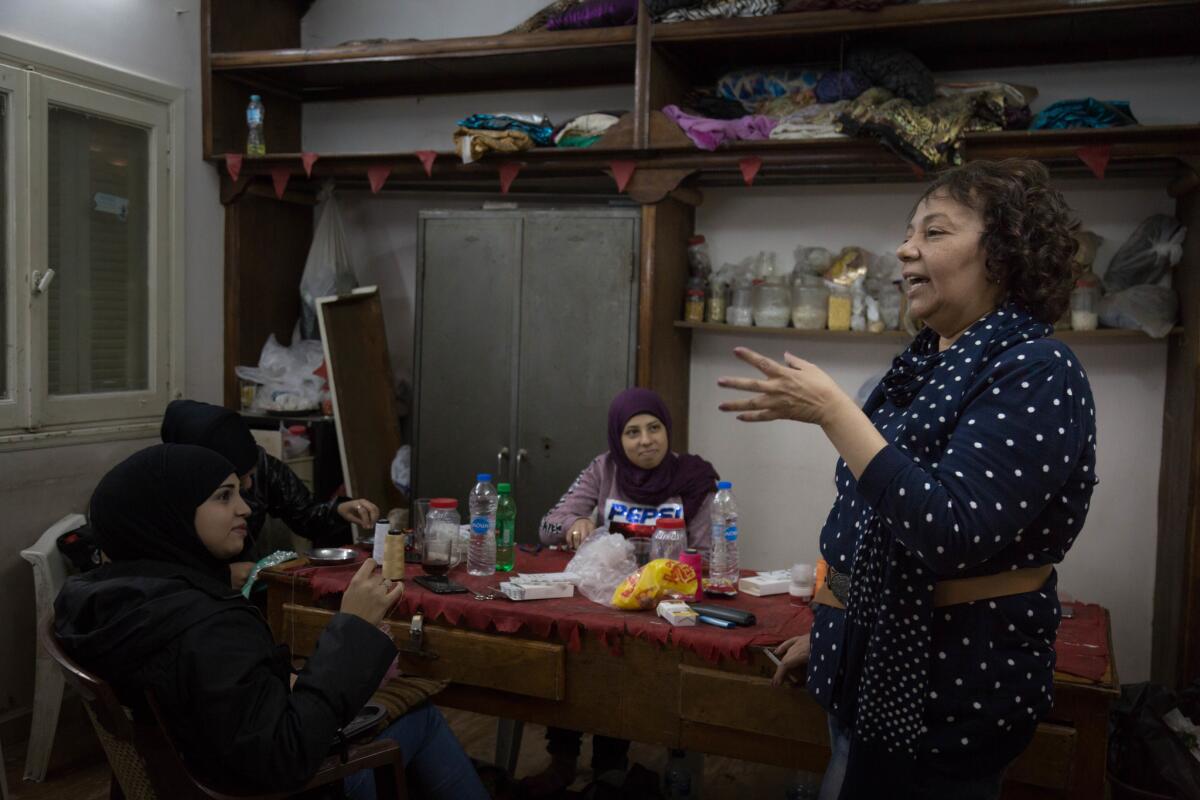
Soft-spoken but no-nonsense, Zaki oversees 25 employees, men and women who handle everything from shopping Cairoâs sprawling souks for fabric to fetching Marlboros for the boss. Seamstresses, stuffers and beaders occupy rooms crammed with dressmakersâ dummies and old sewing machines. Cutters and basic tailors work in another building about a mile away.
Many of Zakiâs workers, like the belly dancers she dresses, have been with her for years. Still, to ensure productivity, the designer keeps an eye on them via closed-circuit TV from her inner sanctum, a cozy room with a plug-in space heater and a floor-length mirror.
Glittery flotsam clutters every surface. Mountains of plastic bags spill open here and there to reveal a bejeweled bra strap or a gold tassel.
On a recent chilly winter evening, Zaki sat on a Louis XIV sofa near two half-filled ashtrays and a box of cold medicine, smoking and chatting with her business assistant, a former London television actress who now goes by the name Sarah Farouk.
Farouk does most of the public relations for Zaki, who prefers to stay in the background, working.
It was well after dark when Farah Nasri, a 29-year-old dancer from France, swept through the doors, two hours late for a 5 p.m. fitting.
Wrapped in a sweater and black leg warmers, she apologized for having slept through her alarm and grumbled that she hadnât taken off her makeup in two days. With Saudi Arabian businessmen in town on winter holidays, it was the belly dance busy season.
Zaki and Farouk listened sympathetically. Zaki sent for tea.
âI like your hair,â Farouk remarked.
âThey changed my extensions!â said Nasri, brightening as she showed off her long, dark mane. âI had a photo shoot at midnight, and then the hairdresser came. I havenât seen the sun for days!â
âYou need to take vitamin D,â said Farouk, plucking a cigarette from a case.
Nasri began her belly dance career nearly a decade ago, when she was a college student in London, where even then, âeveryone was wearing Eman Zaki.â
In those days, dancers on the British circuit would fly to Cairo once or twice a year and order for the season, then sell or trade outfits among themselves.
Professionals are happy to pay $500 or more for one of Zakiâs custom-made costumes, which wonât pull or tear or fall apart on stage â every belly dancerâs nightmare.
But Zaki has also been known to make costumes for free from time to time â simply because she has a vision for a particular dancer or one of her girls is struggling for money.
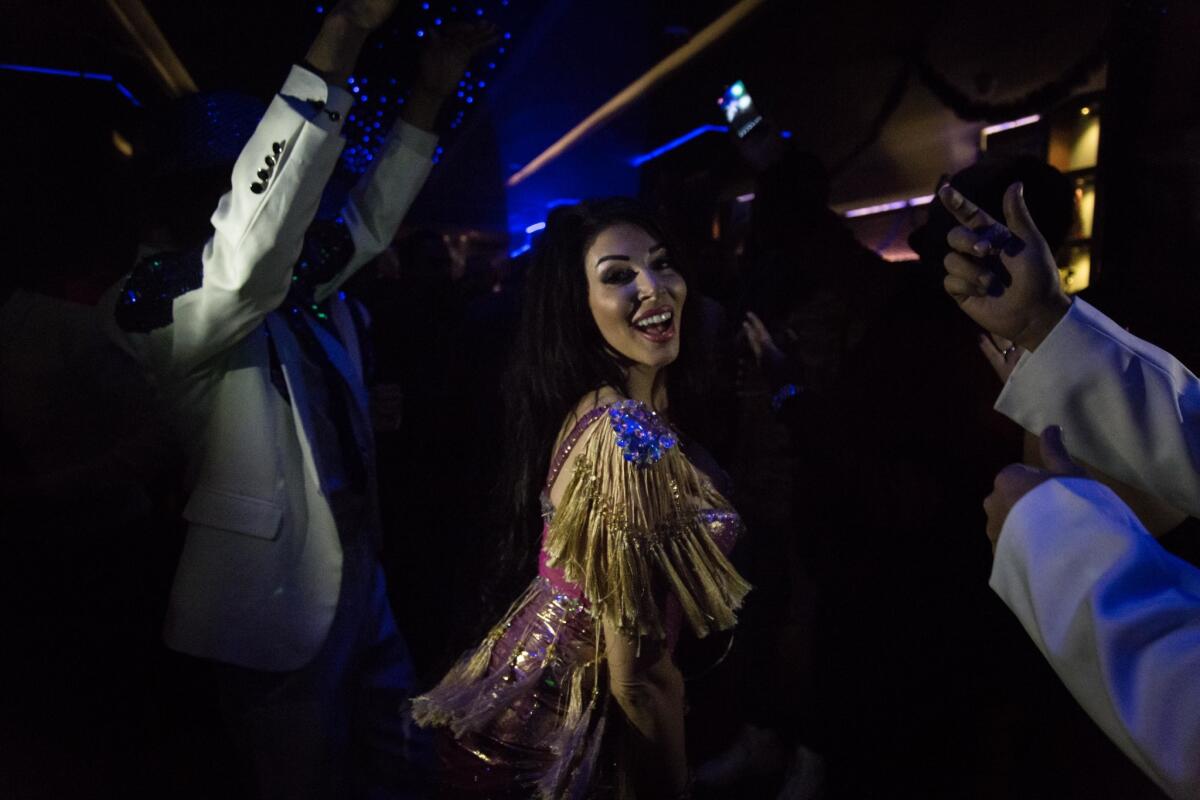
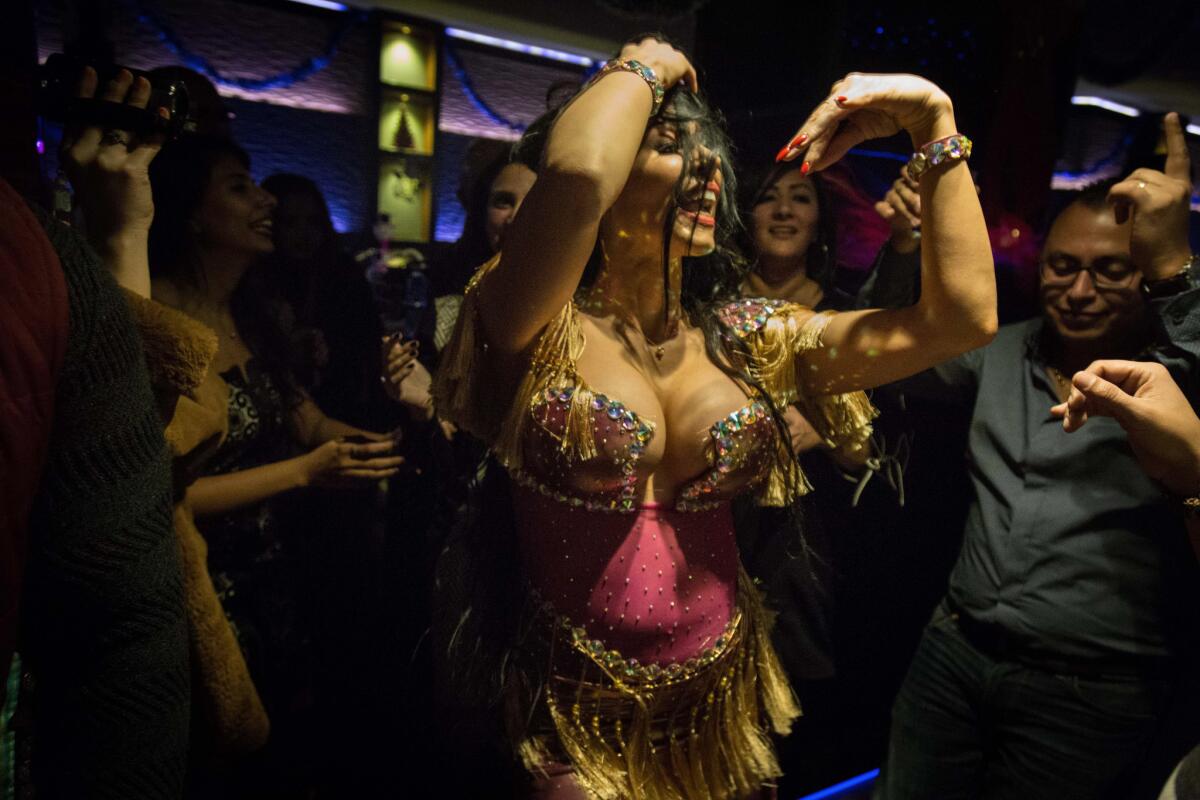
âShe understands we have low periods and high periods,â said Nasri, who moved to Cairo in 2014 and has amassed more than 60,000 followers on Instagram.
With the help of a studio assistant in a camouflage-print hijab, Nasri shimmied into a hot pink casino-themed catsuit emblazoned with clubs, hearts, diamonds and spades in red-and-black rhinestones. Zakiâs is not the sort of clientele that requires dressing rooms; male workers take care to knock before entering.
Zaki, in a faded orange hoodie and jeans, moved her glasses from her head to her face and stood next to Nasri, both silently inspecting her reflection in the giant mirror.
The designer finally spoke: âIf youâre honest with yourself about your strengths and weaknesses, then you always look good, because you know what to show and what to hide.â
Then she used a marking pen to draw an asymmetrical cutout on the pink jumpsuit that would show off more of Nasriâs midriff.
A mermaid gown she tried on next was adjusted to show more thigh following a complaint from her manager that the outfit didnât display enough skin.
Zaki knows how to make a leg look longer with a strategically placed diagonal slit, or how to use lace rosettes to make a backside appear more curvaceous.
But she isnât a fan of ânearly nakedâ costumes â like one by another high-end designer that got a Russian dancer arrested in a fancy Cairo nightclub last spring â and thinks short skirts look good on no one. She has never forgotten her momâs advice: âYou have to be a princess on stage.â
During World War II, her mother danced at Cairoâs legendary Madame Badiaâs Cabaret, where British soldiers mixed with German spies. It was Badia who is widely credited with glamorizing a local Egyptian folk dance by adding elements of ballet and Hollywood costumes.
She created stars like Tahia Carioca, the âArab Marilyn Monroe,â who was married 14 times and famously slapped Egyptâs King Farouk when he threw an ice cube down her dress.
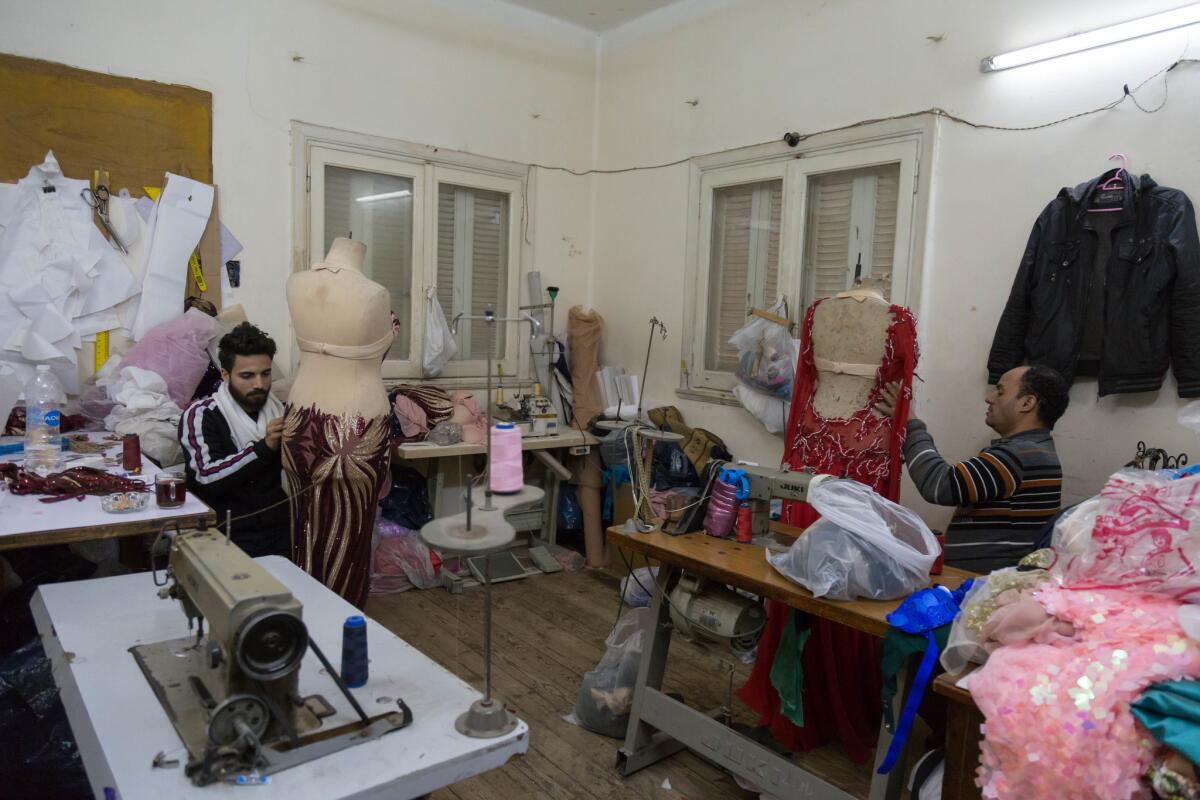
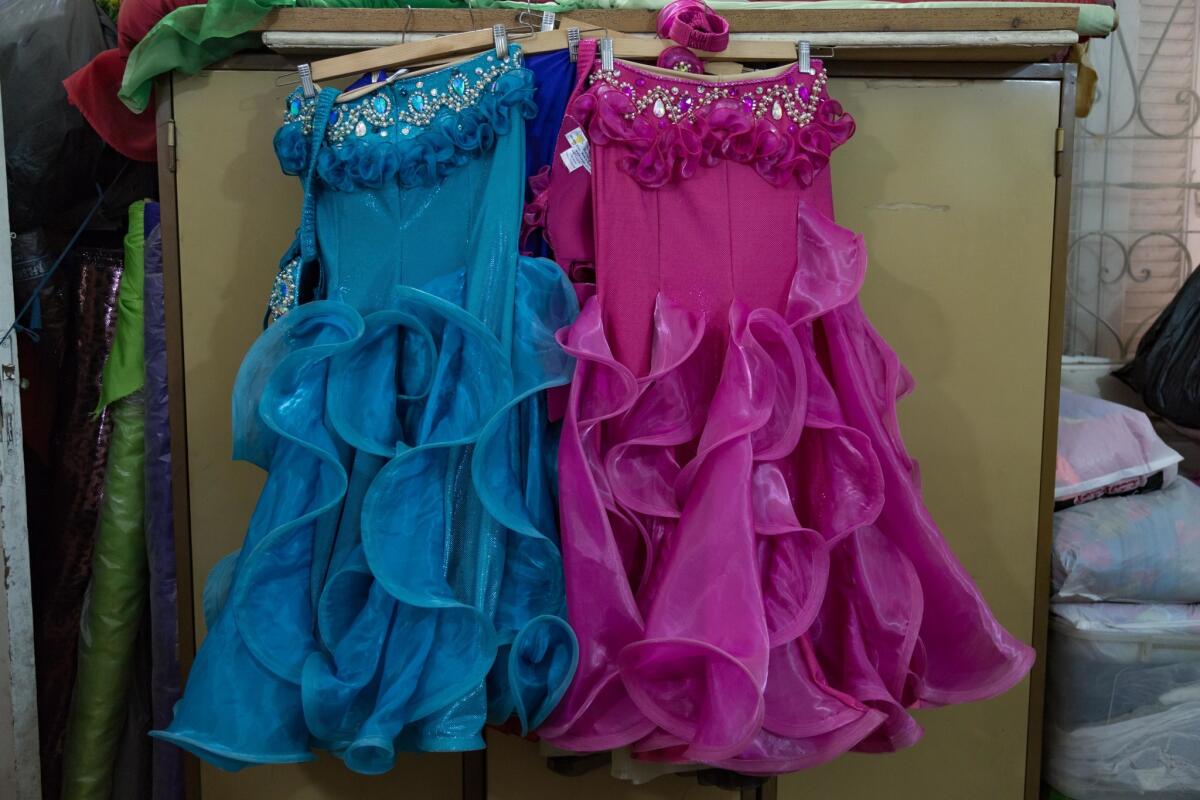
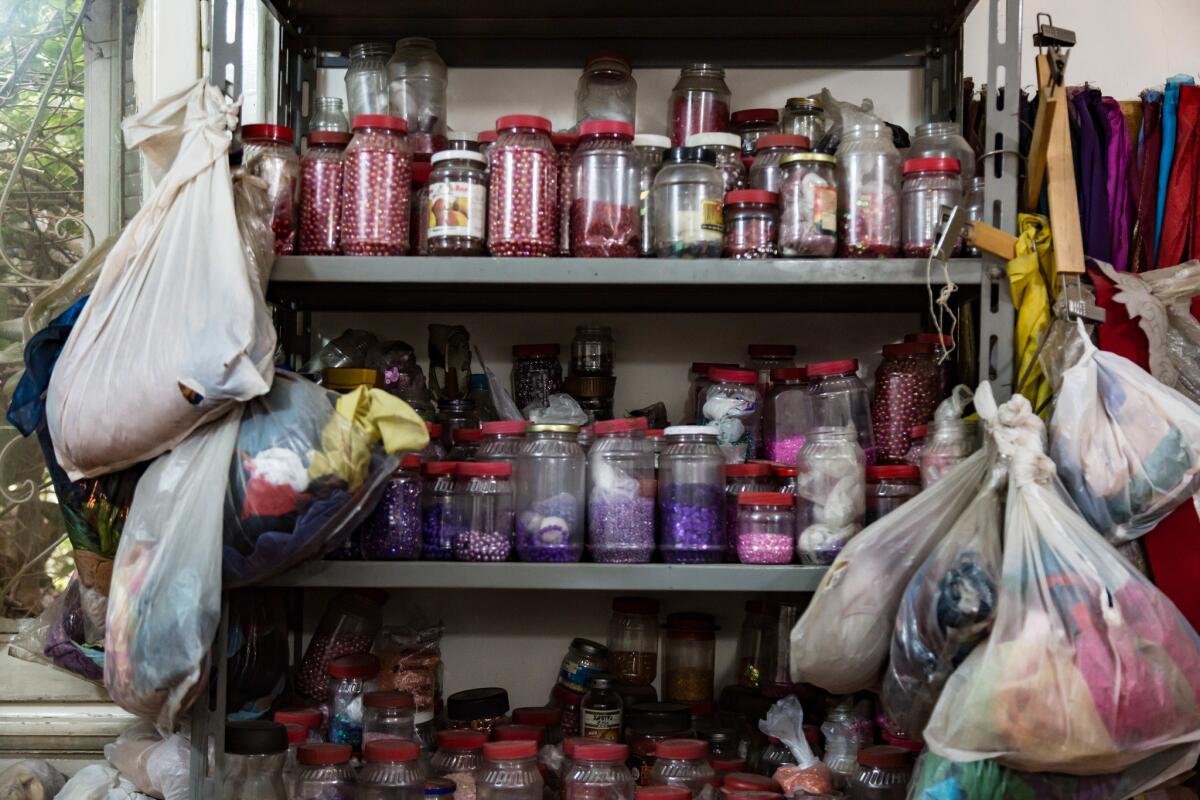
Egypt, where conservative Islam has always clashed with a vivacious culture, has long had a complicated relationship with belly dance.
âEgyptians love music and singing, and they love belly dancers,â said Sarah Farouk, who moved here 20 years ago after becoming captivated with the art form. âBut no one wants you to marry their son.â
Zakiâs mother quit performing to raise children. But she passed on her passion to Zaki and her older sister, Hoda.
As a shy teen growing up in the stately Cairo suburb of Heliopolis, Zaki recalled, âI used to dance for myselfâ â alone and in secret.
When she began auditioning and touring the rising Arab Gulf in the 1980s, it was difficult to find costumes outside of Cairo.
âSo from time to time,â she said, âI would sew my own.â
Zaki stopped dancing for two years in the late 1980s during a brief marriage to an Emirati hotel owner who after their split tried to destroy her comeback.
He failed. What finally drove her out was the catfighting and backstabbing.
In 1989, during a gig at an Alexandria resort, someone sneaked into her dressing room and shredded all her costumes. Zaki remembers the police angrily questioning her before the pile of confettied fabric, as though she was the culprit.
âI asked myself: âDo I really need this?ââ
Retired from the stage, she spent the next decade or so mastering the crafts of cutting and sewing, embroidering and beading, padding and lifting. She took a course in evening gown design.
At first she tried making cushions and other fancy housewares. But it gradually dawned on her that âbelly dancing was where I belong.â
Her shop opened in the late 1990s â just as Egyptian migrants were returning from jobs in Saudi Arabia, bringing a new wave of puritanism that continues to suffocate the arts, landing novelists, singers and comics in jail for morality offenses. Even onscreen kissing is banned.
In 2008, Newsweek magazine declared Dina Talaat Sayed, or Dina, as she is universally known here, âthe last Egyptian belly dancer.â
The elite, in particular, shunned belly dancing as vulgar and low class. Fortunately for Zaki, the rest of the world didnât agree.
The art form was exploding in Asia and Eastern Europe, spawning a new wave of performers who dreamed of dancing in Egyptâs capital. The 2011 Arab Spring uprising that ended a 30-year dictatorship only increased the allure.
Though the revolt sparked an economic crisis that plunged nearly a third of Egyptians into poverty, it also created a surge of national pride that spurred a trend of street chic among the upper classes. At upscale nightclubs, deejays are as likely to be spinning thumping electro-shaabi hits in Arabic as techno or hip-hop.
And belly dancers are once again de rigueur at posh cabarets and fancy weddings.
Even Dina is still dancing. Now in her 50s, the âQueen of Cairoâ performs every Thursday at the five-star Cairo Semiramis.
But dancers from abroad are the mainstay of Zakiâs business.
She endured Egyptâs lean times thanks to bulk orders from online belly dance stores in the United States â where her sister lives and sometimes contributes designs â and the Eman Zaki Golden Lotus Facebook page.
Locally, many stars come from Russia, Britain or Brazil. With their social media savvy and a style that is faster and more gymnastic than the languorous subtlety of the classic Egyptians, they perform on bar tops more often than in ballrooms.
Veterans of Cairoâs belly dance community often lament the foreign invasion as corrupting a local art form. But Zaki simply shrugs.
âIn poor neighborhoods, you can still see girls dancing in the streets â even girls with hijabs,â she said. âItâs part of our culture.â
To design her creations, Zaki draws inspiration from such diverse sources as rap videos and the Miss Universe pageant.
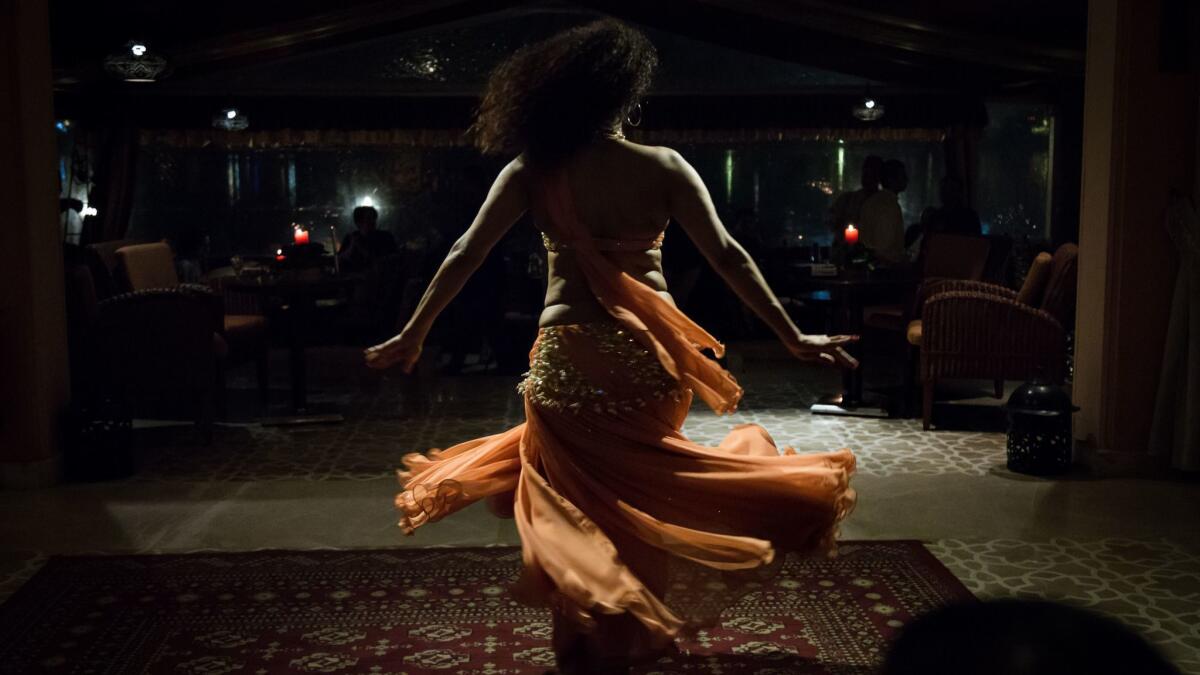
There are a handful of other high-end Cairo costume designers, as well as countless ready-to-wear knockoffs. At the cityâs storied Khan el Khalili bazaar, you can pick up a sparkly off-the-rack ensemble for about $100 â less than a fifth of the price of an Eman Zaki.
âItâs like the difference between going to the Gap or Christian Dior,â said Amity Alize, a 33-year-old American accountant who also runs a belly dance studio called Raq-On in White River Junction, Vt.
Every other year, she comes to Cairo âto see the real thing.â She arrived at Zakiâs studio on a recent afternoon with one of her students, Alison Trow, a 49-year-old physical therapist who was seeing Egypt for the first time.
Alize needed something relatively modest for performing occasional gigs at Greek and Armenian restaurants back home in rural New England. Anyway, she explained, she prefers to keep her âvery curvyâ figure somewhat tastefully under wraps.
âThat dress you made me last time had the best bra,â she told Zaki. âI just want to wear it all the time, because it actually fits.â
From her usual corner chair, Farouk began waxing nostalgic about the âEgyptian magicâ of brassiere engineering in the pre-plastic-surgery era. She provided a steady stream of stories, jokes and commentary, while Zaki quietly directed assistants and held up bits of fabric against the womenâs bodies as they squeezed in and out of samples.
Alize eventually settled on a long crimson chiffon gown and a gauzy number with black fringe and green and white sequins that gave it an Elvis vibe but also reminded her of the mid-century Egyptian divas she grew up watching on YouTube.
For Trow, a redhead, the choice was unanimous: a slinky semi-transparent forest green shift with gold embroidered cutouts from shoulder to thigh.
After they left, Farouk counted and recounted the thick pile of currency theyâd just handed her, while Zaki had a smoke.
It was after 9 p.m. when she finally walked out onto the streets of the thousand-year-old city, where donkey carts clip-clopped alongside late-model luxury cars and vendors in traditional galabeyas sold sweet potatoes to besuited businessmen. Amid the traffic and the contradictions of modern Cairo, Zaki headed home.
Sign up for Essential California
The most important California stories and recommendations in your inbox every morning.
You may occasionally receive promotional content from the Los Angeles Times.







